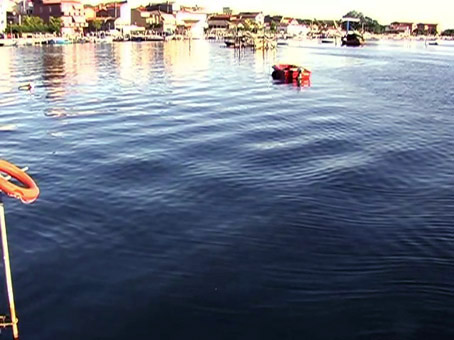
© copyright notice ||| français ||| italiano
========================================================
back to page 2 \ Itinerary 2.3, page 3.
-- 2.3.#13 ---
Case: Lusenzo 2008-06-18 u 1711.
Lusenzo 2008-06-18 u1711: Moon's declination S 27°26; distance from the Moon 404827 km; Moon's angular velocity 134.28 deltins/hr; zero variation.

--- 2.3.#14 ---
When cumulative-dissipative processes are evident.
These processes can be recorded when they become evident. This occurs under at least three conditions:
(1) when the water is still, but not stagnant, and the two processes alternate, in a more or less orderly fashion, almost to the point of unison (NB: keep in mind that the alternation of the two processes produces a continuous change in volume, and an apparently frenetic movement, but the water remains still);
(2) when the water moves relative to the Moon at one of the critical angular velocities for water;
(3) that the values of (2) are also long-lasting, that is, their variation /hr is zero, or very close to zero—as shown in the graph.
Even in the open sea.
Under very specific conditions, when the water is completely still, the phenomenon can occur even in the open sea.
--- 2.3.#15 ---
Occupied volume.
As the videos show, the difference in volume occupied by water in the two phases—cumulative and dissipative—is notable.
A gamble.
At this point, I still don't know if the greatest volume of water occurs in the cumulative phase, as I would bet. Since it could be the opposite, I prefer to leave this point open.
Given my age, I leave the resolution of this point to others. This will give others another reason to take an interest in this research.
-- 2.3.#16 ---
Our mind is reluctant to see certain phenomena.
Other examples, even more interesting than those I've published so far, will be included in Itinerary 2.5.
First, I should inform the reader that some of the phenomena presented here are difficult to perceive directly with our own eyes. Itinerary 2.4 will address this issue.
These are phenomena that our mind accepts and perceives only when viewed on a monitor or in films.
Ultimately, this is one of the reasons why we've waited so long to understand the phenomenon of the tides.
This problem slowed the progress of the research.
I became aware of this limitation—which could be shared by many, or even all—two years after I began my visits to Lusenzo.
Thanks to my camera's monitor, I finally realized that it was recording something different from what my eyes were seeing happening at the same time.